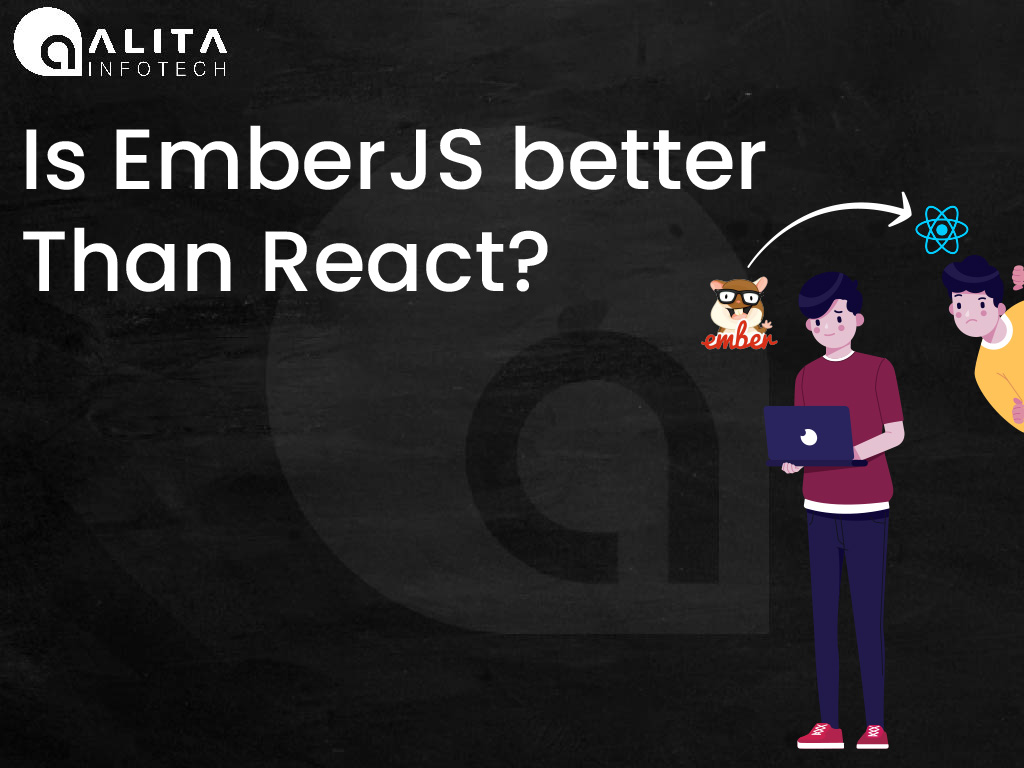EmberJS is a JavaScript web framework that’s source and follows a component service model. It aims to help developers build single page web applications by incorporating practices and patterns from the single page app ecosystem.
Ember is widely used on websites, such as HashiCorp, DigitalOcean, Apple Music, Square Inc., Intercom, Discourse, Groupon, LinkedIn Live Nation, Ghost, Nordstrom and Twitch.
While primarily known as a web framework Ember can also be used to create desktop and mobile apps by following an app approach. One prominent example of an Ember desktop app is Apple Music within the iTunes desktop program.
The trademark, for EmberJS belongs to Tilde Inc.
History
In December 2011, the SproutCore 2.0 framework underwent a name change, to Ember.js in order to clear up any confusion between the app framework and widget library of SproutCore 1.0. Yehuda Katz, a member of the jQuery, Ruby, on Rails and SproutCore core teams, is credited with creating this framework.
Why EmberJS?
- EmberJS is a JavaScript framework that’s available as an open source project licensed under the MIT license.
- It introduces a binding syntax using the HTMLBars template engine, which extends the functionality of the Handlebars templating engine.
- The framework also incorporates the Glimmer rendering engine to enhance rendering speed.
- Additionally, Ember.js offers a Command Line Interface tool that streamlines development by incorporating Ember patterns and prioritizing developer efficiency.
- Furthermore it supports data binding to establish connections between two properties ensuring that when one property is modified the other property automatically reflects the updated value.
EmberJS features and peculiarities
When discussing the differences, between React and Ember it’s worth noting that Ember has incorporated features like state management routing and other functionalities from the start unlike a library.
- Included development environment
- Rendering on the client side using Glimmer
- Reloading of web pages
- A robust templating system
- Support for the handlebar templating engine
- Progress without stagnation
- Integrated URL routing system
- Emphasis on high performance
- Data layer built on JSON APIs
- Utilization of the Babel Transpiler to enable ES2016 support
- Compatibility, with Testem and Qtest testing tools.
Pros and cons of EmberJS
Pros of EmberJS
- Handlebars based templates are used to craft a user interface, with the necessary code.
- Ember CLI, a command line tool offers support for Sass/Less, CoffeeScript, Handlebars and more.
- A focus on functionality over decision making is promoted by a design paradigm called CoC.
- The framework provides features like rebuilds, auto reload and a test runner as a package.
- The Ember router elegantly supports layered URLs for data fetching, nested loading and error substates.
- Ember Octane emphasizes productivity and performance in its programming model.
- Ember Data Library offers data access capabilities.
- The cohesive ecosystem of Ember facilitates upgrade processes.
Cons of EmberJS
- The learning curve for Ember is quite steep.
- It lacks some functionality at the controller level.
- The framework feels heavy primarily due to its functions and class names.
- Ember’s object model implementation can become bloated because of its size. Call stack during debugging.
- Handlebars inundate the DOM with <script> tags.
- It may not be suitable for projects.
- It appears cumbersome when used for traditional applications.
Organizations using EmberJS

Ember is widely used in industries such as technology, finance, consulting, healthcare, and manufacturing.
506 companies have incorporated the framework into their projects. Notable names like Microsoft, Heroku, LinkedIn, Twitch, Accenture, Crunchbase, Vine, and others have integrated EmberJS into their development processes. Apple Music stands out with 85 million subscribers. Has benefited from Ember’s smooth development process and fast speed. The framework has proven instrumental in tackling challenges for developers.
Ember vs. React performance comparison
The Ember vs. React performance difference lies in their origin.
Ember is considered slower compared to React because of its data library. React, on the other hand, is known for its design, which contributes to its faster performance. When working with Ember on projects that require updates, changes may take longer to be detected.
This delay in detecting changes impacts the rendering process, leading to longer loading times. Its focus on handling functionalities sets it apart from frameworks in terms of performance metrics.
React stands out for its performance, thanks to its structure. Its component-based approach streamlines the development process for applications that need features. The streamlined architecture, reusable components, and JavaScript rendering contribute to the speed of React applications.
The creators highlight that React allows developers to quickly create user interfaces without requiring optimizations for performance. Along with a performance library, developers have methods available to further enhance the speed of React-based applications;
- Use the production build.
- Analyze components with the DevTools Profiler.
- Virtualize long lists.
- Avoid reconciliation
- Avoid mutating data.
EmberJS vs. ReactJS comparative table
Conclusion
The pace of development, in the JavaScript community is moving quickly. With new libraries and frameworks emerging it may seem like everyone is following the trends. However this rapid evolution actually brings diversity and caters to a range of needs driven by business goals. It’s important to understand the distinctions between tools like React and Ember for those who’re new, to this field. Reach out to us today to start building your web application without delay.
